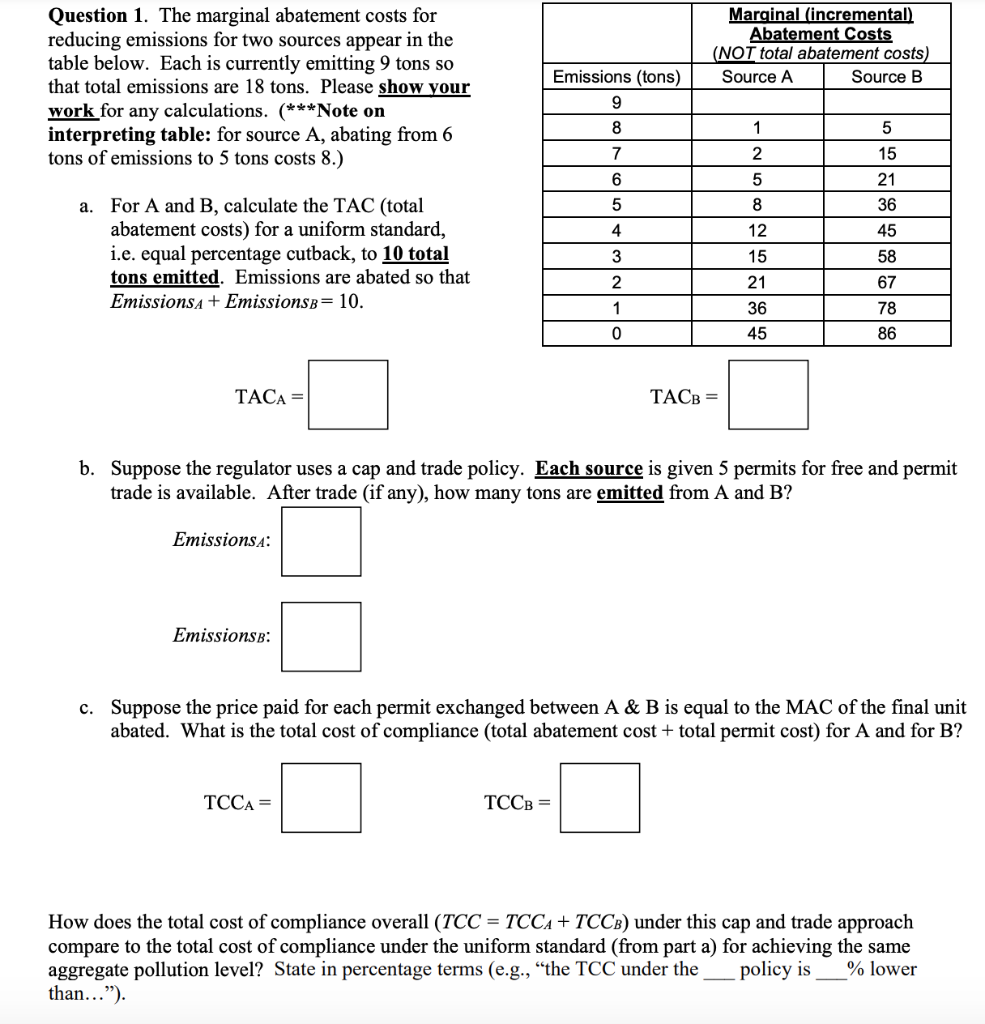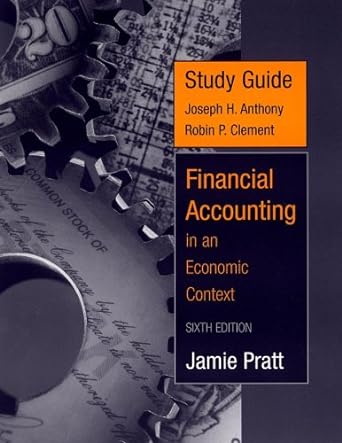
Marginal (incremental) Abatement Costs (NOT total abatement costs) Source A Source B Question 1. The marginal abatement costs for reducing emissions for two sources appear in the table below. Each is currently emitting 9 tons so that total emissions are 18 tons. Please show your work for any calculations. (***Note on interpreting table: for source A, abating from 6 tons of emissions to 5 tons costs 8.) Emissions (tons) 9 8 1 2 7 6 5 8 5 15 21 36 45 58 5 4 12 a. For A and B, calculate the TAC (total abatement costs) for a uniform standard, i.e. equal percentage cutback, to 10 total tons emitted. Emissions are abated so that Emissionsa + Emissionsb= 10. 3 2 67 15 21 36 45 1 78 86 0 TACA = TACB= b. Suppose the regulator uses a cap and trade policy. Each source is given 5 permits for free and permit trade is available. After trade (if any), how many tons are emitted from A and B? Emissions : Emissions: c. Suppose the price paid for each permit exchanged between A & B is equal to the MAC of the final unit abated. What is the total cost of compliance (total abatement cost + total permit cost) for A and for B? TCCA = TCCB = How does the total cost of compliance overall (TCC = TCCA + TCCB) under this cap and trade approach compare to the total cost of compliance under the uniform standard (from part a) for achieving the same aggregate pollution level? State in percentage terms (e.g., "the TCC under the policy is % lower than..."). Marginal (incremental) Abatement Costs (NOT total abatement costs) Source A Source B Question 1. The marginal abatement costs for reducing emissions for two sources appear in the table below. Each is currently emitting 9 tons so that total emissions are 18 tons. Please show your work for any calculations. (***Note on interpreting table: for source A, abating from 6 tons of emissions to 5 tons costs 8.) Emissions (tons) 9 8 1 2 7 6 5 8 5 15 21 36 45 58 5 4 12 a. For A and B, calculate the TAC (total abatement costs) for a uniform standard, i.e. equal percentage cutback, to 10 total tons emitted. Emissions are abated so that Emissionsa + Emissionsb= 10. 3 2 67 15 21 36 45 1 78 86 0 TACA = TACB= b. Suppose the regulator uses a cap and trade policy. Each source is given 5 permits for free and permit trade is available. After trade (if any), how many tons are emitted from A and B? Emissions : Emissions: c. Suppose the price paid for each permit exchanged between A & B is equal to the MAC of the final unit abated. What is the total cost of compliance (total abatement cost + total permit cost) for A and for B? TCCA = TCCB = How does the total cost of compliance overall (TCC = TCCA + TCCB) under this cap and trade approach compare to the total cost of compliance under the uniform standard (from part a) for achieving the same aggregate pollution level? State in percentage terms (e.g., "the TCC under the policy is % lower than...")







